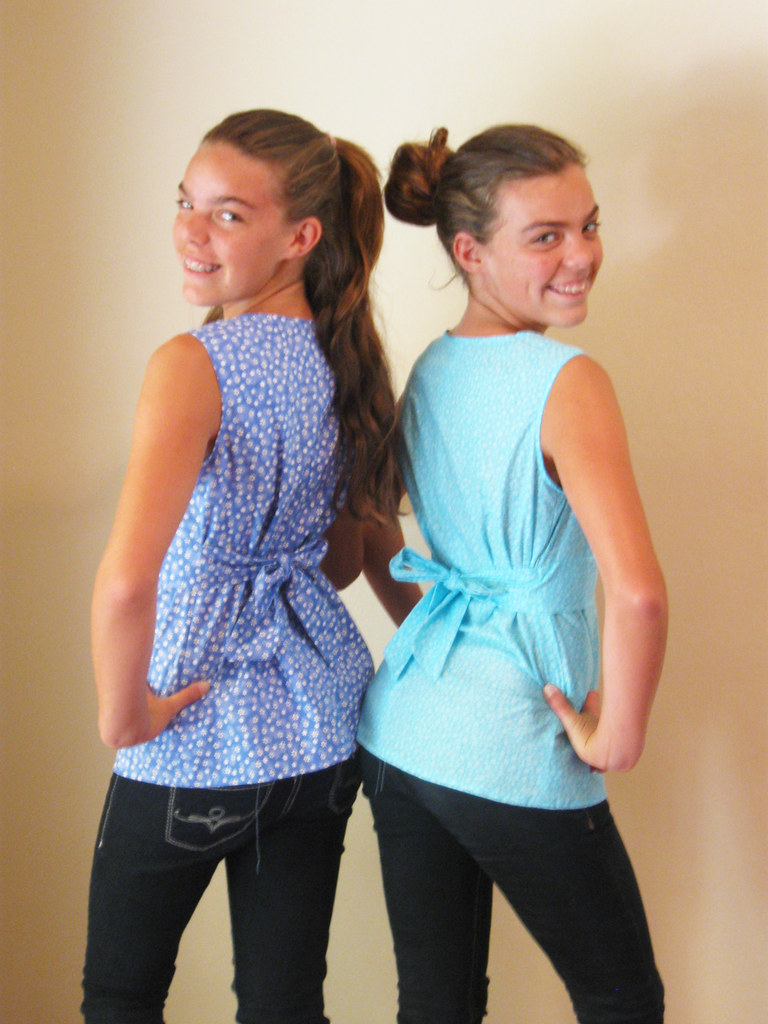Last week I taught an all day sewing lesson with twin 13 year old girls. From shopping for fabric and patterns at 9 am to the final pressing at 4 pm we completed their tops in record time, including a break at lunch for pizza. I was exhausted without sewing a stitch. My mother is a retired elementary school teacher, and every time I teach some sewing to kids I tell her I don’t know how she taught every day, all day, 25 children in the classroom and didn’t collapse on the couch at 3 pm calling for a martini. (for the record after school she did all the usual household stuff, made great dinners and helped us with our homework, no collapsing at all)
They chose Simplicity 3750 and used quilting cotton.
Here they are in their finished tops.
Back view and their Next Top Model pose.
Here are some observations I have made about beginning sewers.
1) Sewing in a straight line is a learned skill. Experienced sewers know that the machine feeds the fabric and only needs to be guided very lightly to keep a consistent seam allowance. New sewers tend to push and pull the fabric, and their 5/8” seam allowance is a bit wobbly.
2) Since kids don’t drive - the concept of the foot pedal as a gas pedal that makes the machine go faster or slower is an alien idea. Again, practice on this is everything.
Once a sewer can control the speed of the machine with the foot pedal, everything
becomes much easier, particularly slowing down to create accuracy on curves, with
narrower seams, as well as removing pins before sewing over them.
I try to get my students to look at the fabric in front of the presser foot, about 2 or 3 inches in front of the needle. If you are staring at the needle going up and down then it is unlikely that you are maintaining the fabric at the 5/8” line.
The needle will go up and down whether you look at it or not, and if you keep your eyes on the fabric about 2” in front of the needle, lining up your seam allowance with the 5/8” guide on the sewing machine you will have a consistent straight seam. If your sewing machine does not have a line along the flat part as mine has, then a post-it note is a good way to create the line. For kids I always put that on the machine, it adds a great visual guideline for fabric placement. For myself, when sewing seams or topstitching at anything above 3/4” width I always use the post-it trick.
Today’s SunnyGal Garden photo
Jackson and Perkins Floribunda rose: Miss Behavin’
















Sewing is a lost art and teaching girls how to sew is amazing! They both did a great job!
ReplyDelete